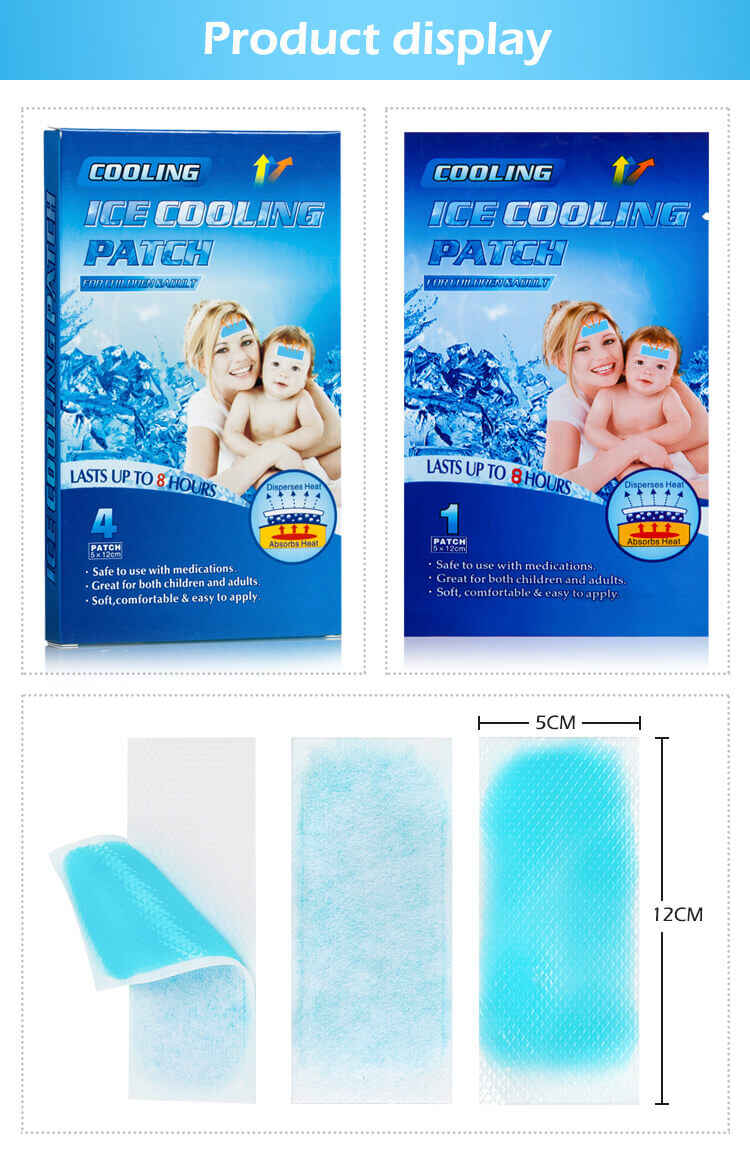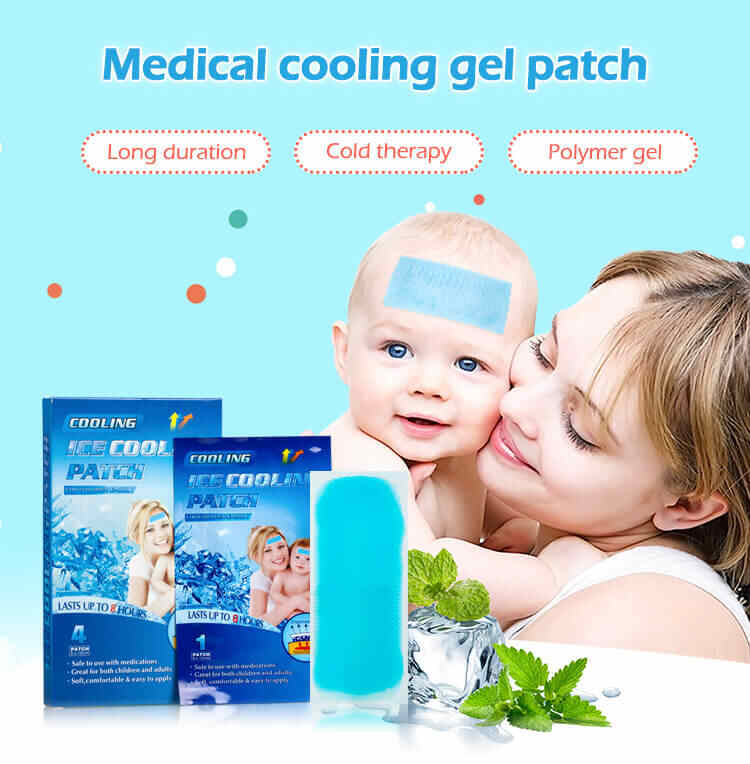What’s the Difference Between a Hydrogel Cooling Patches Manufacturer and Supplier?
When building a successful brand in the cooling products industry, especially with hydrogel cooling patches, it’s essential to know who you’re working with. Many business owners and procurement managers use the terms hydrogel cooling patches Manufacturer and hydrogel cooling patches Supplier interchangeably—but they are not the same. Understanding the difference is crucial for making the right sourcing decisions, whether you want Custom hydrogel cooling patches, Private Label hydrogel cooling patches, or are seeking a reliable hydrogel cooling patches OEM partner.
In this article, we’ll break down the differences, roles, and value each brings to your business, and why working with the right partner can significantly impact your product quality, costs, and brand reputation.

1. What Is a Hydrogel Cooling Patches Manufacturer?
A hydrogel cooling patches Manufacturer is the company that actually produces the patches. This involves:
R&D and formulation of the hydrogel gel layer.
Procurement of raw materials like water-retention polymers, adhesives, and non-woven fabrics.
Manufacturing processes such as mixing, coating, laminating, and cutting.
Quality control testing to ensure consistency and safety.
Compliance certifications like ISO, CE, or FDA registration.
Key Features of a Manufacturer:
Owns production facilities and machinery.
Can create Custom hydrogel cooling patches with unique formulas, sizes, and features.
Offers hydrogel cooling patches OEM services for brands that want their own specifications met.
Has the ability to innovate—such as developing long-lasting cooling patches or eco-friendly materials.
Example: A sports recovery brand partners with a manufacturer to create a 12-hour cooling patch with added menthol for athletes.
2. What Is a Hydrogel Cooling Patches Supplier?
A hydrogel cooling patches Supplier is typically the company that sells and distributes patches—sometimes produced by themselves, but often sourced from manufacturers.
Suppliers may:
Purchase products in bulk from manufacturers.
Act as middlemen, offering a range of brands or product types.
Provide Private Label hydrogel cooling patches by rebranding an existing manufacturer’s products.
Manage logistics, warehousing, and export.
Key Features of a Supplier:
Often doesn’t own production facilities.
May have limited ability to customize products.
Can be ideal for small businesses or startups that don’t need large-scale production runs.
Provides faster order fulfillment for standard, ready-made patches.
Example: A supplier purchases standard 8-hour cooling patches from multiple manufacturers, repackages them, and sells to retail chains under their own label.
3. Manufacturer vs. Supplier: The Core Differences
| Aspect | Hydrogel Cooling Patches Manufacturer | Hydrogel Cooling Patches Supplier |
|---|---|---|
| Production Capability | Produces patches in-house | Relies on external manufacturing |
| Customization | High (ideal for Custom hydrogel cooling patches) | Limited (mostly Private Label hydrogel cooling patches) |
| MOQ (Minimum Order Quantity) | Usually higher | Often lower |
| R&D Capability | Strong, can innovate | Minimal to none |
| Lead Time | Longer (due to production) | Shorter (stock ready) |
| Cost | Lower per unit at scale | Higher per unit due to markups |
| OEM Services | Yes | Rarely (unless they have direct manufacturer ties) |
4. When to Choose a Manufacturer
Working directly with a hydrogel cooling patches Manufacturer is best if:
You want Custom hydrogel cooling patches with unique formulas or branding.
You need hydrogel cooling patches OEM production to strict specifications.
You plan high-volume production and want better cost efficiency.
You value direct control over product quality.
Benefit Example:
A baby care brand creates gentle, skin-friendly fever relief patches using a manufacturer’s R&D lab to ensure safety for infants.
5. When to Choose a Supplier
Partnering with a hydrogel cooling patches Supplier is better if:
You need products quickly without waiting for production.
You want small quantities or to test the market.
You prefer Private Label hydrogel cooling patches with minimal development time.
You don’t need complex customization.
Benefit Example:
A new e-commerce store orders small batches of ready-made cooling patches from a supplier to test consumer demand before committing to manufacturing.
6. The Role of OEM in the Manufacturer–Supplier Relationship
Hydrogel cooling patches OEM (Original Equipment Manufacturing) is where the manufacturer produces goods according to the buyer’s specifications, often sold under the buyer’s brand.
Manufacturers are the main providers of OEM services.
Suppliers may act as the intermediary, arranging OEM orders with manufacturers.
For example, a hydrogel cooling patches Supplier could connect you with a manufacturer to produce Private Label hydrogel cooling patches in your packaging but with their standard formula.
7. Private Label vs. Custom: Where Each Fits
Private Label hydrogel cooling patches → Best sourced from suppliers for quick launch; uses existing product formulas.
Custom hydrogel cooling patches → Best sourced from manufacturers to meet unique performance, size, or ingredient needs.
8. Risks of Confusing the Two
Mixing up manufacturers and suppliers can lead to:
Overpaying for products by going through unnecessary middlemen.
Quality issues if you assume a supplier has direct control over production.
Delays if a supplier must wait on their own manufacturer for replenishment.
Knowing exactly who makes your patches ensures you can trace quality and negotiate effectively.
9. How to Verify Whether You’re Dealing with a Manufacturer or Supplier
Ask for factory tour videos or addresses – Real manufacturers have production lines.
Request customization details – Manufacturers can adjust formulas; suppliers often cannot.
Check certifications – Manufacturing certificates should match the company’s name.
Look at MOQs – Higher MOQs often indicate direct manufacturing.
10. Why This Matters for Brand Success
Choosing the right partner—hydrogel cooling patches Manufacturer or hydrogel cooling patches Supplier—affects:
Product quality.
Cost efficiency.
Market speed.
Brand reputation.
If your goal is innovation and long-term brand building, a strong hydrogel cooling patches OEM partnership with a manufacturer is often the best choice. If speed and low-volume flexibility are priorities, a supplier may be the way to go.
Conclusion
While both hydrogel cooling patches Manufacturers and hydrogel cooling patches Suppliers are essential players in the market, their roles are distinct. Manufacturers make the products and can offer custom hydrogel cooling patches through OEM services, while suppliers distribute them—often with a focus on Private Label hydrogel cooling patches.
Your choice depends on your business goals, budget, and customization needs. Understanding these differences ensures you partner with the right entity and set your brand up for sustainable success.
Related Questions & Answers
Q1: Can a supplier also be a manufacturer?
A1: Yes, some companies operate as both, producing their own goods and distributing them.
Q2: Which is cheaper—buying from a manufacturer or supplier?
A2: Manufacturers are usually cheaper for large orders, while suppliers may be cost-effective for small quantities.
Q3: Can suppliers provide OEM services?
A3: Some can, but they often outsource to manufacturers.
Q4: Which is better for Private Label hydrogel cooling patches?
A4: Suppliers can provide faster turnaround, but manufacturers offer more control over quality.
Q5: How do I find a reliable hydrogel cooling patches Manufacturer?
A5: Look for proven OEM experience, quality certifications, and positive client feedback.






